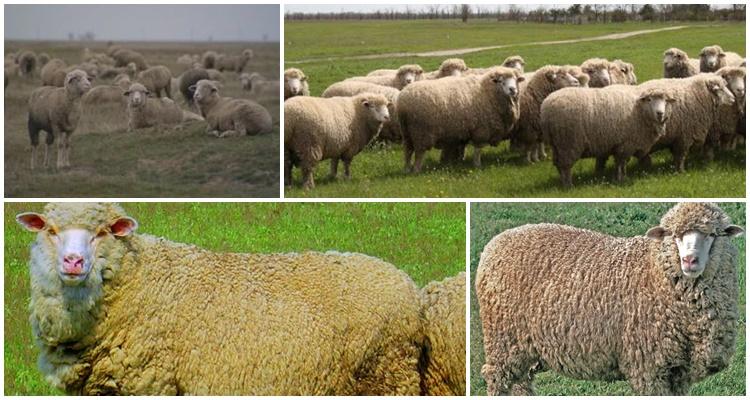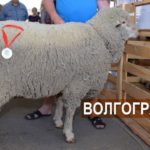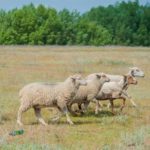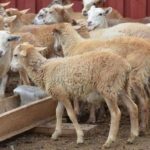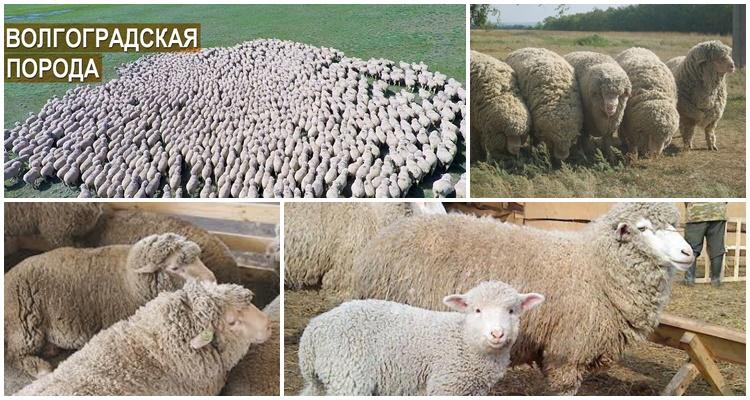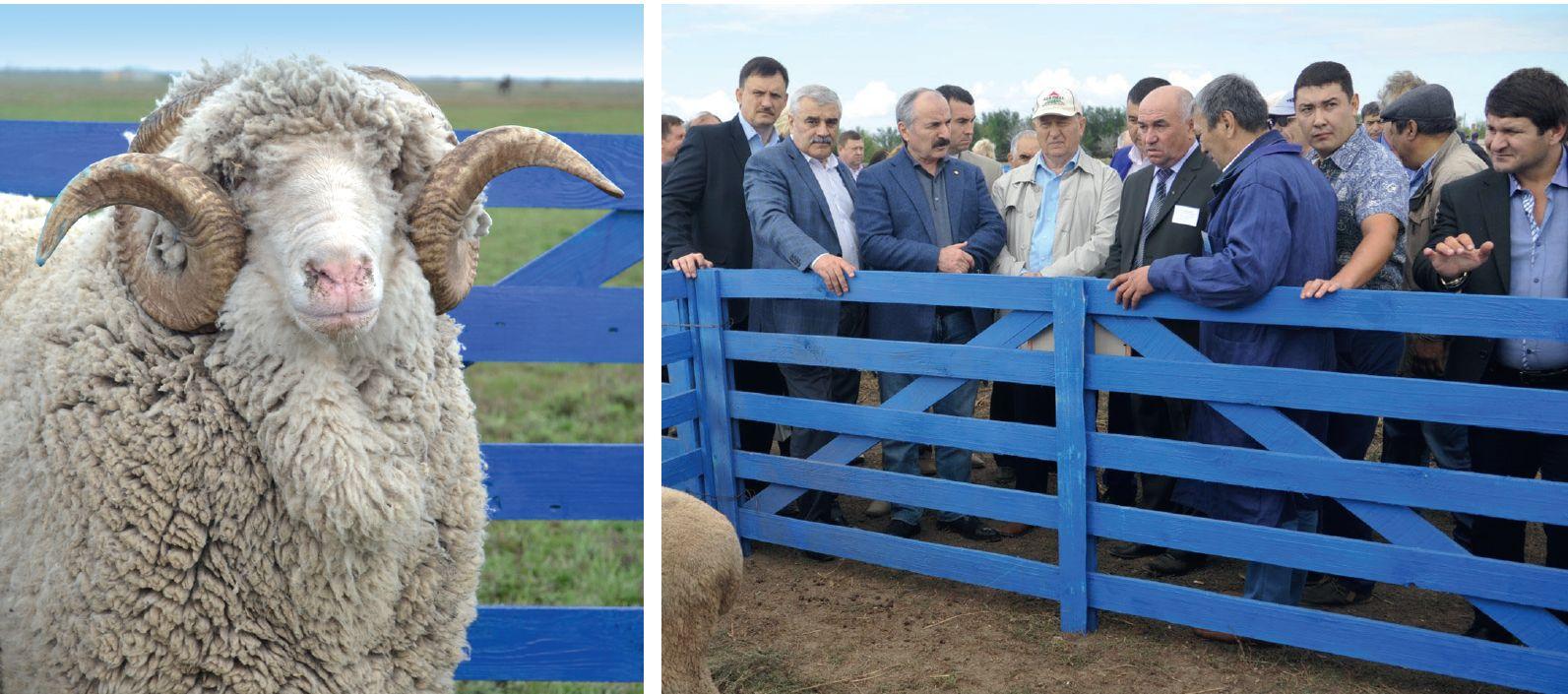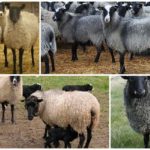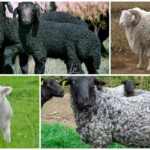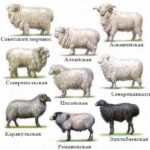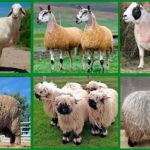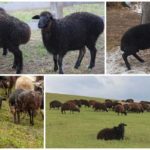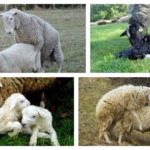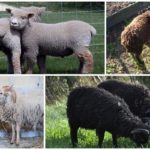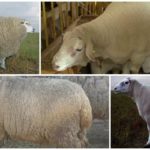The Volgograd breed of sheep is characterized by a number of features. These animals belong to the meat-and-wool category and are highly productive. For their breeding to be successful, it is necessary to provide the animals with complete and high-quality care. It should include proper nutrition, prevention of disease and pest attacks. Creating a suitable microclimate in the sheepfold is of no small importance.
Appearance and characteristics of the Volgograd breed
This is a fine-fleeced sheep breed that was obtained through complex crossbreeding.Selection work was carried out at the Romashkovsky state farm in the Volgograd region from 1932 to 1978. Fat-tailed queens with coarse wool were used as the basis. They were crossed with New Caucasian rams and prekos. The resulting crosses were combined with the Caucasian and Grozny breeds. Representatives of the next generations were raised “inside”, choosing the most successful individuals.
The authors were faced with the task of creating a breed of sheep for meat and wool production. At the same time, they did not discard the dairy characteristics.
As a result of selection work, a fine-wool breed was obtained, which belongs to the meat-and-wool direction of productivity. Representatives of this breed are well developed. They are distinguished by their large size, pronounced meat shape and proportional build.
Sheep are characterized by a compact body 70-75 centimeters long. They have strong legs with well-made thighs. At the withers, the height of the animals reaches 68-70 centimeters. The head is large. The animals are also characterized by a massive neck. The back is level, and the withers and loin are wide.
Representatives of this breed perfectly combine meat and wool production. Rams weigh 110-125 kilograms, sheep - 58-65. Representatives of this breed are considered precocious. Lambs at 7 months already weigh 20-25 kilograms. The live weight of lambs at slaughter is 30-35 kilograms.
The uterus is characterized by fairly high fertility. This figure reaches 130-160%. Milk production in queens with 1 lamb is 95-105 kilograms.If there are two lambs, this parameter is 145-150 kilograms. Sheep are distinguished by fairly thick wool, which is characterized by noticeable uniform crimp and a white tint. The fleece has a staple structure and medium density. The outer staple has a predominantly small square shape.
The length of the coat in females is 8-9 centimeters, in males - 9.5-10.5. Fat is distinguished by light shades - mostly cream. On average, wool clipping from males is 13-15 kilograms, from females – 5.5-6.
Representatives of this breed are raised in the Volga region, the Urals, and central Russia. Moreover, the best breeding herd is located in the Volgograd region. Since the animals successfully combine meat and wool characteristics, the number of livestock is constantly increasing. Today it includes 940 thousand heads. Moreover, 98% of the herd is purebred.
Main positive and negative aspects
Subtleties of maintenance and care
It is recommended to keep animals in a warm barn. This should be done at a temperature of at least +8 degrees. It is important to make the floor dry and warm. It is advisable to make it from wood. Sheep can hardly tolerate high air humidity and drafts, so it is important to ensure that the barn is dry and warm.
Sheep can spend a lot of time on pastures.They are able to adapt to cold weather and even get food under the snow. However, in rainy weather it is not worth driving sheep out to pasture. Wet food can cause digestive disorders.
Nutrition
Feeding animals is not difficult. They can eat different types of grass, leaves, and dry stems. In this case, sheep should spend most of their time on pastures. In spring and summer, in addition to pasture, it is necessary to feed pets with minerals. In autumn, the grass becomes less nutritious. Therefore, it is worth introducing root vegetables, cereals, peas, and bran into the diet of animals.
In the winter season, silage and mixed feed are used as the basis of nutrition. Animals can eat hay throughout the year. It is important to ensure that the sheep drink a lot. The grazing area should be located close to a watering hole.
Breeding rules
To get offspring, 1 lamb is enough for 10-15 queens. Animals reach sexual maturity at 5-7 months. At the same time, sheep should be allowed to breed no earlier than 1 year. Mating is performed when females are hunting. It lasts 1-2 days. In the absence of coverage, the next hunt begins after 2.5-3 weeks.
The gestation period for sheep is approximately 5 months. It is important to ensure that during this period the animals are not afraid of anything. Lambs are most often born in late winter or early spring. Sometimes this happens in the summer.
Diseases and prevention
In summer, sheep often face attacks from blood-sucking insects. They not only use animals as a source of food, but also lay eggs in affected areas. To prevent diseases and alleviate living conditions, sheep need to be examined. When wounds appear, they should be cleaned and disinfected.
The Volgograd breed of sheep is very popular among farmers. To achieve success in raising animals, it is recommended to provide them with proper care.

